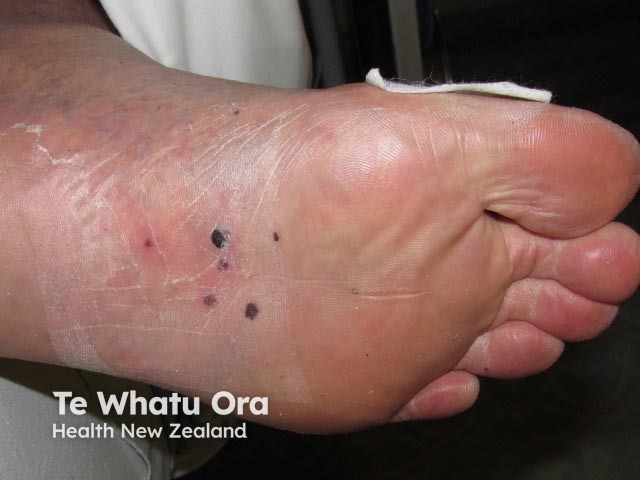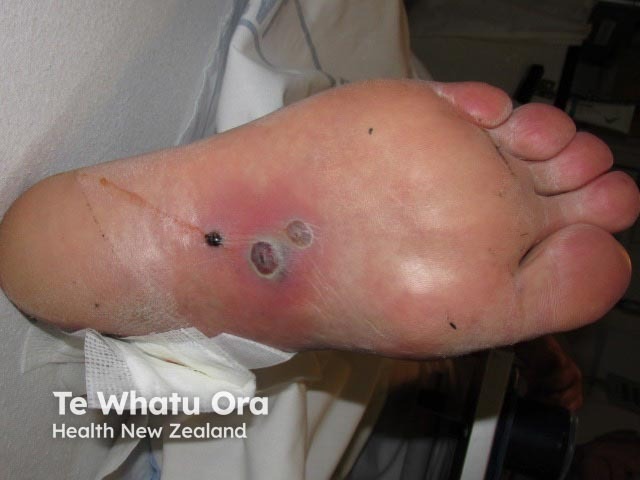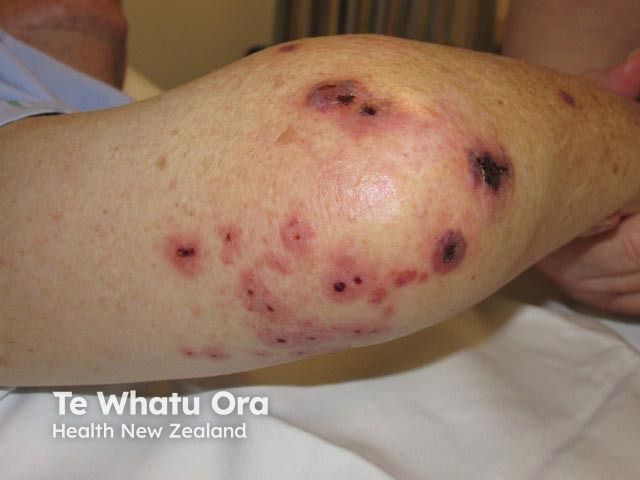Main menu
Common skin conditions

NEWS
Join DermNet PRO
Read more
Quick links
Systemic diseases Blood vessel problems
Author: Amy Dendale, 5th year medical student, University of Auckland. Chief Editor: Dr Amanda Oakley, Dermatologist, Hamilton, New Zealand, October 2015.
Introduction Demographics Causes Clinical features Diagnosis Treatment Outcome
A septic embolus is a blood clot containing bacteria that has become dislodged and travelled through the bloodstream. Septic emboli become trapped in small terminal blood vessels, blocking them.
Septic emboli damage the body tissues in two ways:
Septic emboli are a consequence of infection and their diagnosis should always prompt a search for the primary source.
Septic embolic occur in people at increased risk of infections, particularly of the heart lining and blood vessels. These include:
Septic emboli come from a site of infection, where bacteria are present in large numbers and various inflammatory processes and turbulent blood flow increase the likelihood of clot formation. An infected clot, or a small fragment of a clot, becomes dislodged and comes to rest at a distal location. Local tissue damage occurs due to the combined effects of ischaemia (lack of oxygen supply) and infection.
There are various sources of septic emboli.
People with septic emboli tend to exhibit classic but non-specific signs of infection, including fever, fatigue, and an increased heart rate. There have been reports of asymptomatic primary infection and subsequent septic embolisation, particularly from the spleen.
The specific clinical findings of septic embolisation depend on where the clot gets lodged. This may include any part of the body, such as the lungs, causing lung infections and accesses, or the skin, causing distinctive painful lesions.
Skin manifestations include:
Emboli may affect internal organs:

Septic emboli

Septic emboli

Septic emboli

Septic emboli
The diagnosis of septic embolisation requires investigation to confirm and find the source.
Establishing the source of the septic emboli is the key to diagnosis. While some potentially causative infections may be diagnosed clinically, others require more extensive investigation.
The mainstay of treatment is to control the original source of infection. How this is best achieved depends on the source and may include:
Septic embolisation may be a mild or very severe condition, and the long-term outcome depends on which organs are involved, the severity of the precipitating infection, and the general health of the patient preceding the infection.
In healthy people, or those with only mild infection and cutaneous emboli, active treatment of the primary source of infection is often sufficient to clear disease and prevent further septic embolisation.
Where septic emboli have caused extensive infection of the limbs, gangrene may develop. This may necessitate amputation of affected areas.
Involvement of internal organs, particularly lungs and brain, may progress to overwhelming systemic infection (sepsis) and death. Involvement of internal organs does not preclude full recovery however the treatment course is often long and difficult.